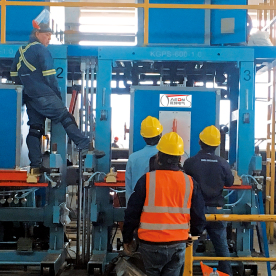[Variable Impedor Device]Understanding the Variable Impedor Device: Revolutionizing Electrical Systems for Enhanced Efficiency and Performance
News 2024-7-26
In the ever-evolving landscape of technology, the demand for energy efficiency and optimized performance in electrical systems has never been higher. One of the pivotal innovations contributing to this shift is the Variable Impedor Device (VID). This device is designed to enhance the control and efficiency of electrical circuits, making it a game-changer for industries ranging from consumer electronics to renewable energy systems. By understanding the functionality, applications, and advantages of the Variable Impedor Device, we can appreciate its significance in modern electrical engineering.
What is a Variable Impedor Device?
At its core, a Variable Impedor Device serves as an adjustable component in electrical circuits, offering variable impedance to manage and regulate the flow of electrical power. Impedance, represented as a combination of resistance and reactance, plays a critical role in determining how efficiently an electrical circuit operates. By allowing the impedance to be varied, the VID enables finer control over electrical parameters, leading to improved performance and reliability.
The design of a Variable Impedor Device typically incorporates advanced electronic components such as resistors, capacitors, and inductors, integrated with control circuitry. This design allows users to change the impedance dynamically, responding to real-time conditions in the circuit. Whether used in audio equipment, power systems, or signal processing, the ability to adjust impedance offers distinct advantages.
Applications of Variable Impedor Devices
Variable Impedor Devices find applications in a myriad of fields, underlining their versatility and importance across various sectors:
1. **Audio Engineering**: In sound systems, the quality of sound is highly dependent on the impedance of audio components. Using a VID, audio engineers can adjust impedance levels to optimize sound quality depending on the environment and equipment. This leads to enhanced clarity and fidelity, ultimately improving listener experience.
2. **Renewable Energy**: In solar power systems, VIDs can effectively manage energy flow between solar panels and batteries or grids. By adjusting the impedance, these devices ensure maximum power transfer and efficiency, particularly as conditions change throughout the day.
3. **Telecommunications**: In communication systems, maintaining the correct impedance is essential for minimizing signal loss and distortion. The use of Variable Impedor Devices supports effective signal processing by allowing adjustments to impedance levels, which ultimately strengthens data transmission and reception.
4. **Medical Devices**: In medical technology, particularly in imaging equipment, VIDs can help in adjusting the electrical characteristics to enhance image quality and ensure operational safety.
Advantages of Using Variable Impedor Devices
1. **Enhanced Efficiency**: By allowing real-time adjustments to impedance, VIDs enable circuits to operate at optimal levels, reducing wasted energy and promoting greater efficiency. This is particularly beneficial in systems where electrical loads can fluctuate frequently.
2. **Improved Performance**: The ability to modify impedance leads to better performance in various applications, from audio clarity in speakers to more reliable communications in telephony. The adaptability of VIDs means that systems can maintain high performance under changing conditions.

Understanding the Variable Impedor Device: Revolutionizing Electrical Systems for Enhanced Efficiency and Performance

Understanding the Variable Impedor Device: Revolutionizing Electrical Systems for Enhanced Efficiency and Performance
4. **Flexibility and Scalability**: Variable Impedor Devices offer the flexibility to adapt to differing operational requirements without the need to redesign entire systems. This characteristic is particularly important in rapidly changing industries or environments.
Conclusion

